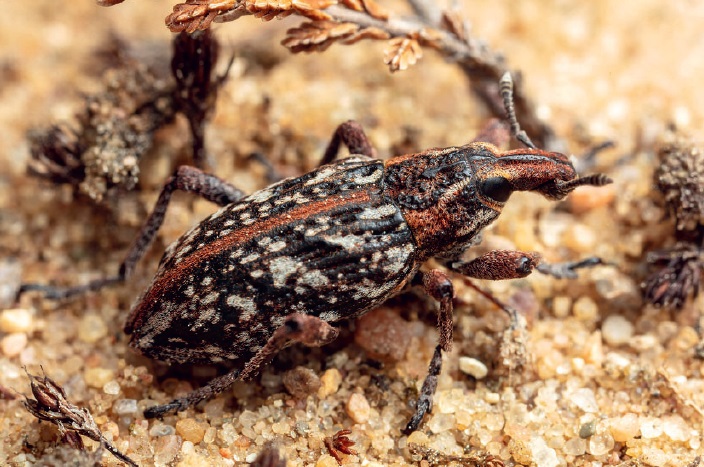Hedspolvivel, Coniocleonus nebulosus (Linnaeus, 1758), återfunnen i Sverige (Coleoptera, Curculionidae Latreille, 1802)
Nyckelord:
skalbaggar, vivlar, hedspolvivel, Coniocleonus nebulosus, Coleoptera, Curculionidae, nytt fyndAbstract
Coniocleonus nebulosus (Linnaeus, 1758) is arguably one of the rarest weevils in Sweden. In older collections the species was frequently confused with Coniocleonus turbatus (Fåhraeus, 1842), which is also rare but somewhat more widespread. After correcting for misidentifications, C. nebulosus (Linnaeus, 1758) proved to be known only from a small number of localities. All records were old or very old, the latest being from 1940. In the late 1800s and early 1900s the species was repeatedly recorded from several localities along the west coast, suggesting that it has declined since then. A probable cause of the decline is the overgrowing of coastal heaths, that were previously traditionally managed by burning and extensive grazing. On all Swedish red lists since 2005, C. nebulosus has been classified as Regionally Extinct (RE). In 2022, however, a specimen was found on a sandy inland heath managed by intermittent burning, near Skillingaryd in the province of Småland. The site is located in the same parish (Tofteryd) as the 1940 record, and it is not unlikely that the two records – more than 80 years apart – represent the continuous presence of this species in this area. The habitat has been a military training field with open heathland since the late 1600s. The recent rediscovery, combined with the fact that the species has proved to be surprisingly hard to find, awakens hope there may still remain other undiscovered populations in western Sweden.

##submission.downloads##
Publicerad
Referera så här
Nummer
Sektion
Licens
© Entomologisk Tidskrift, resp. artikelförfattare och fotograf har upphovsrätterna. Eftertryck är förbjudet men korta citat tillåts om
källan Entomologisk Tidskrift anges.




